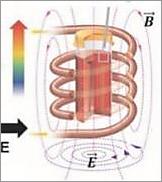
A team led by University of Minnesota researchers has developed a new method for thawing frozen tissue that may enable long-term storage and subsequent viability of tissues and organs for transplantation. The method, called nanowarming, prevents tissue damage during the rapid thawing process that would precede a transplant. The U of MN has long been a leader in organ transplants – 2017 marks the 50th anniversary of the world's first pancreatic transplant, in 1967. According to the study's co-author, Prof. Michael Garwood, PhD, of the University of Minnesota Dept. of Radiology, "Prior to the development of [this nanowarming technology, called] SWIFT, no imaging technique had been capable of quantifying high concentrations of iron-oxide #nanoparticles in tissues non-invasively." Consortium Chair Susan M. Wolf led the team that developed the oversight guidelines for nanotechnology research with human participants; learn more about those here.